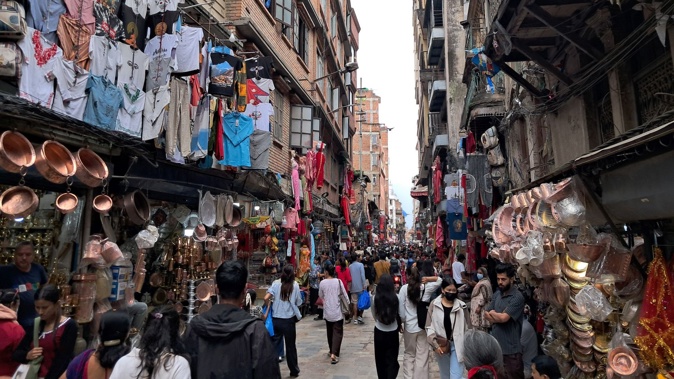
It was a dramatic time to pay a visit to Kathmandu. The Gen Z protests in mid-September sparked two days of rioting, violence, and destruction on the streets, culminating in the killing of over 70 people, particularly students and police officers. The student-led uprising was firmly focused on the corrupt government and its cronies, who had arguably over-reached by seeking to curb access to social media platforms. It was a lightning-fast revolution that ousted the rulers and saw an interim female Prime Minister installed, who deftly and swiftly calmed the farm. I arrived into Kathmandu just as the night-time curfews had been lifted by the military.
The newfound sense of peace and calm was palpable, as we taxied from the airport to the Radisson Hotel, in the heart of the tourist district. There was a reassuring sense of celebration on the streets, as people returned to their daily routines and got on with life. It was stunning to see the city metaphorically dust itself off and embrace the new dawn. The most confronting spectacle was the widespread damage and destruction to government buildings – the parliament was scorched, police stations had all their windows smashed, and the incinerated mangled remains of buses and cars had been pushed to the roadside. Freshly painted graffiti shouting out for “Democracy!” liberally plastered the frontages of many government properties. But these visible scars of civil strife were the only calling cards left over from the week’s mass-uprising. Kathmandu was open, welcoming and embracing.
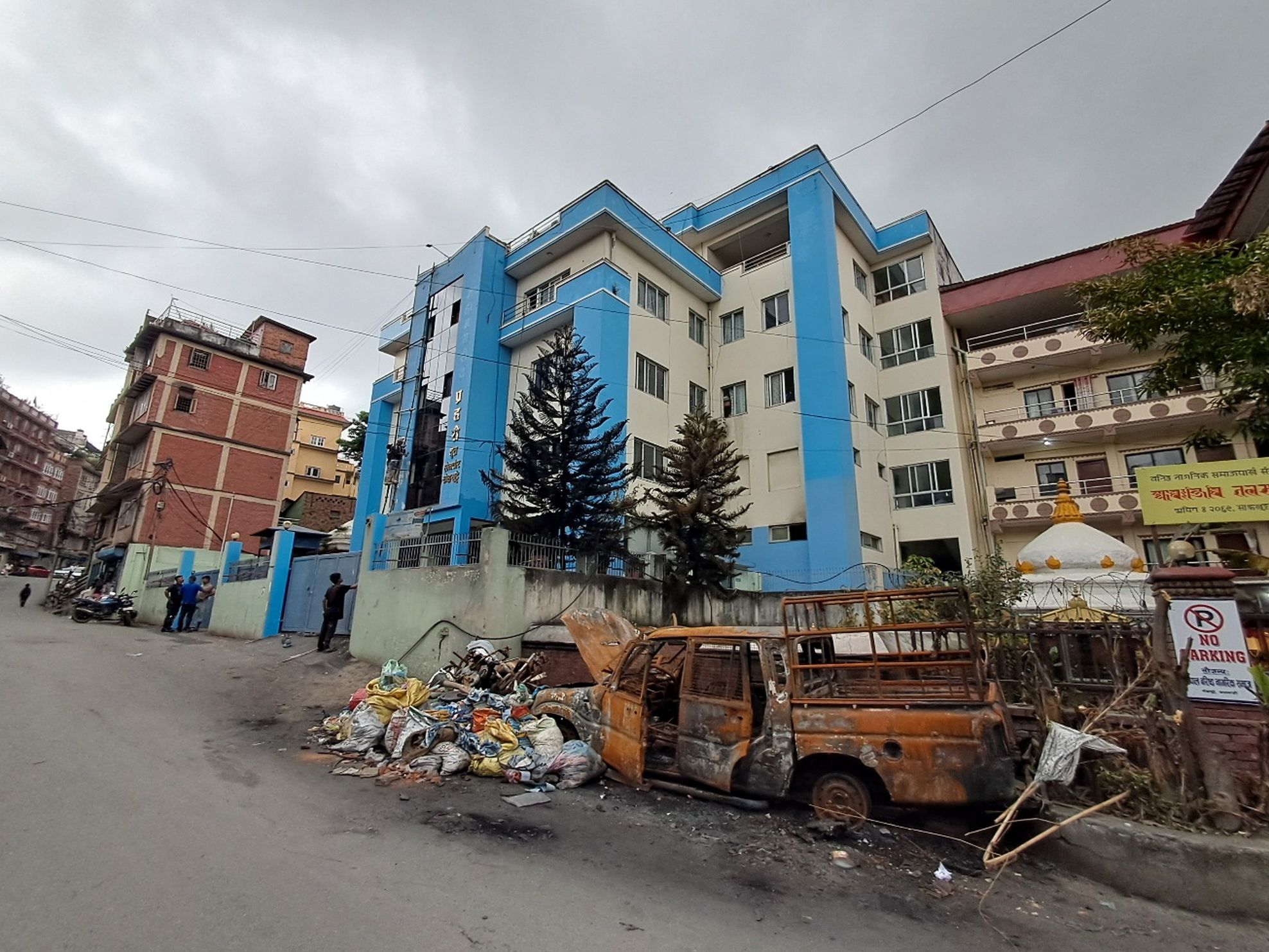 Street scenes in the wake of the Gen Z protests. Photo / Mike Yardley
Street scenes in the wake of the Gen Z protests. Photo / Mike Yardley
I locked in my Kathmandu city-break with Booking.com, tapping into their one-stop-shop travel offering, which enables you to sort flights, accommodation, attractions and car hire, all on the one site. An attraction I highly recommend you experience is a personally guided street-food walking tour. We met up with Deepak, a delightful local guide, outside the serene Annapurna Temple in Asan district. The three-storied pagoda style temple is dedicated to the Goddess of Grains, towering over the ever-lively bazaar. Deepak deftly initiated us with a crash-course in temple etiquette. We rang the bell to disperse evil spirits and negative energy; we circumnavigated the temple and then made a flowering offering (puja) to the deities. Deepak also placed a bindi on our foreheads before plunging us into the tangle of buzzing lanes in Thamel district.
Be sure to go hungry, because the profusion of street food that Deepak had us devour over the course of several hours soon represented a rolling banquet of lavish proportions. Here’s a round-up of our favourite local tastes. We tucked into panipuri from a street vendor. These hollow crisp puris are filled with spicy potatoes and tangy water, creating a zesty, crunchy snack. Another flavourful street snack was chatpat, made with puffed rice, vegetables and spices. A huge highlight are the vegetarian steamed momos. These tender dumplings are crammed with seasonal vegetables – light, savoury and comforting. We also tucked into vegetarian chatamari which is a thin rice crepe topped with spiced vegetables. Very satisfying.
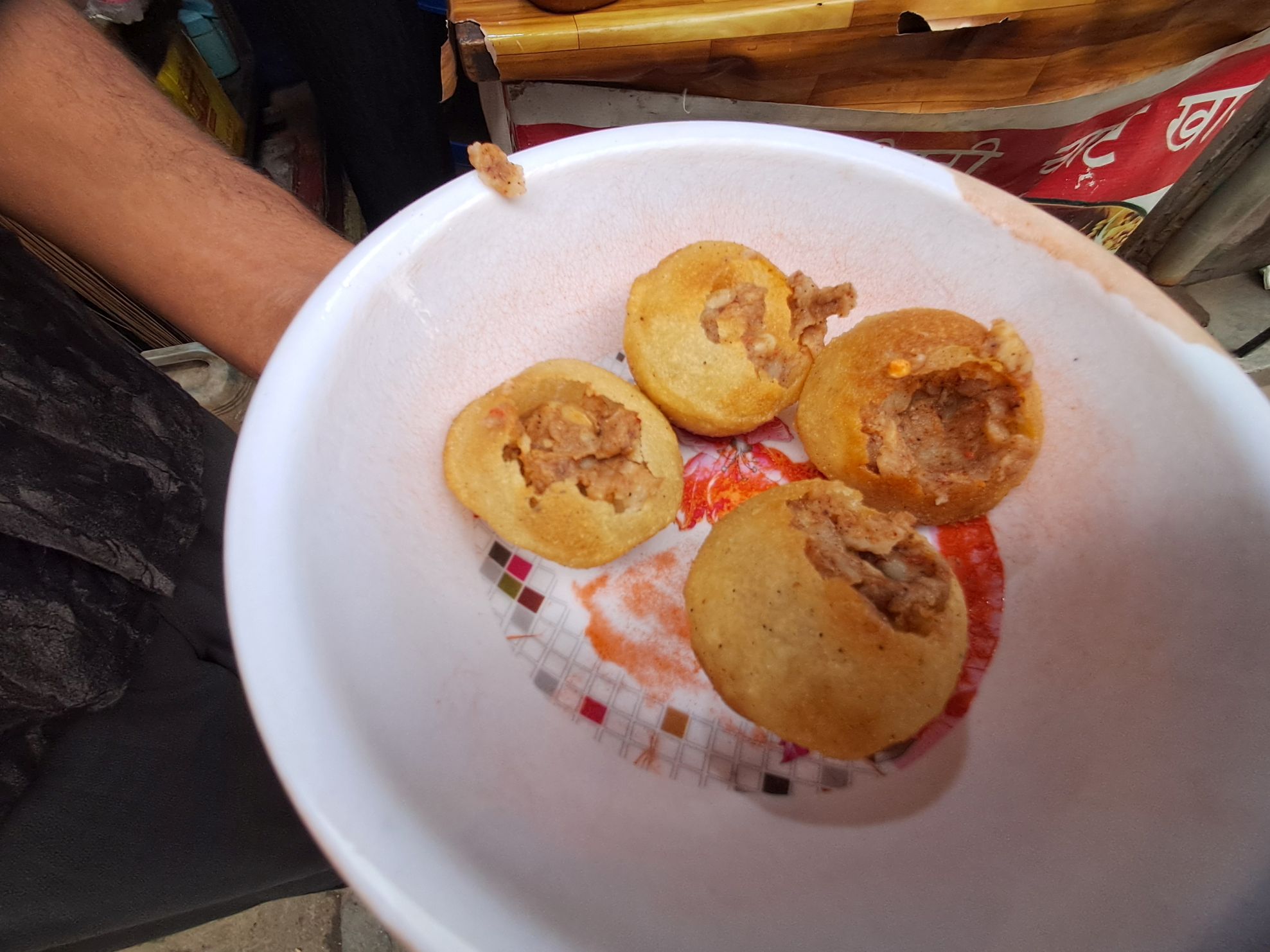 Panipuri. Photo / Mike Yardley
Panipuri. Photo / Mike Yardley
Street drinks featured as well, headlined by Kathmandu’s fabulous sugarcane juice. A young man freshly pressed the juice from the canes. It’s naturally sweet. So simple, cooling and refreshing. I also became very partial to Nepali sweet lassi. The drink consists of smooth yoghurt blended with sugar, topped with condensed milk and dried fruits. It’s a stunningly cooling treat, creamy and indulgent. If you’re a tea drinker, definitely sample a cup or two of Nepali masala milk tea. (Chiya) It is strong, milky and spiced. I would prefer an English Breakfast.
Finally, my favourite dish was thukpa. This hearty mountain noodle soup is enriched with chicken, egg and vegetables. It was such a nourishing meal and is the quintessential comfort food in Nepal. Booking.com has just released the findings from its Taste of Home Asia-Pacific research which reveals that “Trolley tourism” is booming. More than four in five Kiwi travellers enjoy visits to local supermarkets, food markets, and foodie festivals on holiday. And almost three-quarters of us have chosen a destination solely to visit a particular restaurant or food spot. Lock in a guided street food tour in Kathmandu, via the attractions tab, on booking.com
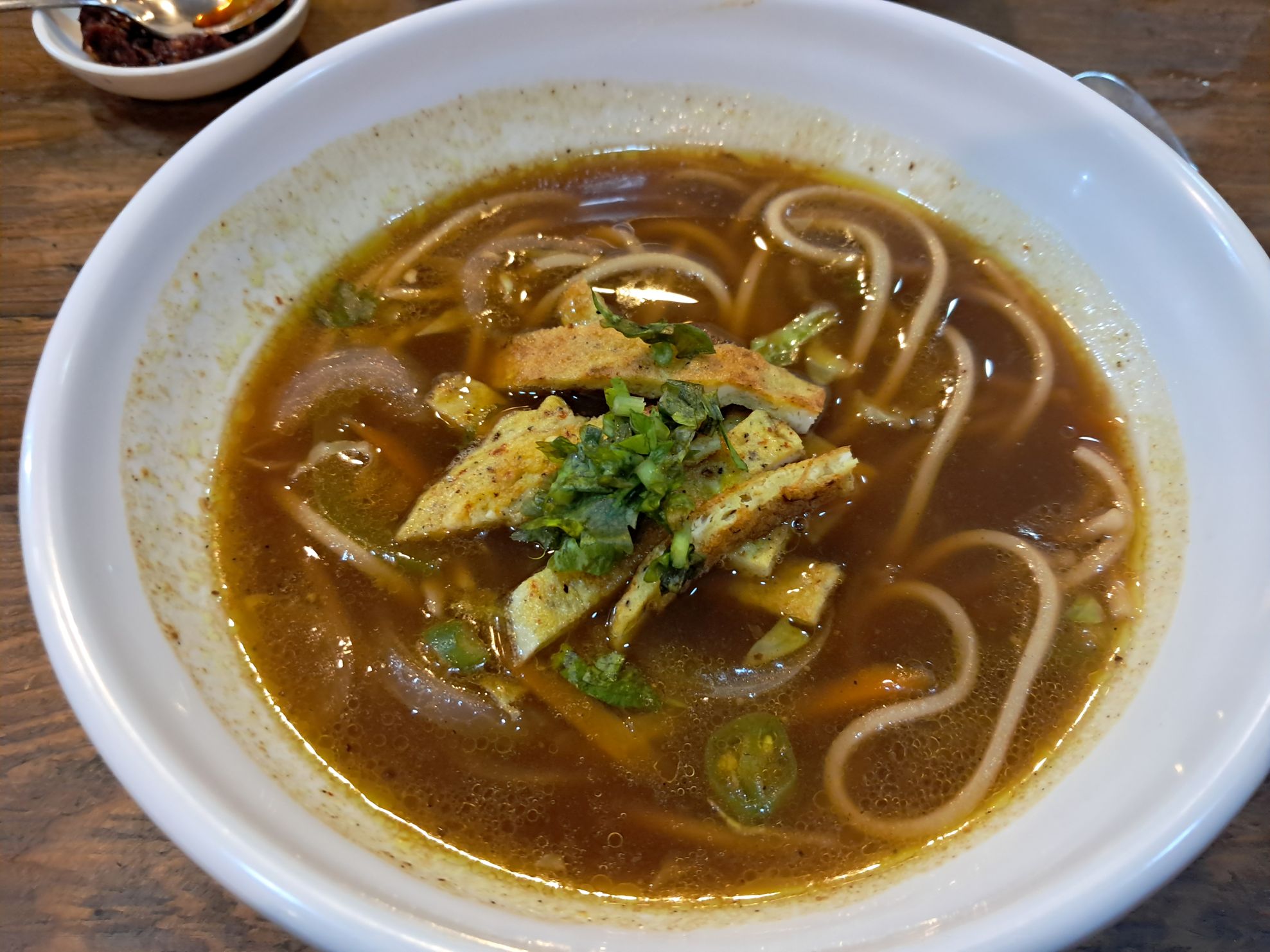 A bowl of Thukpa. Photo / Mike Yardley
A bowl of Thukpa. Photo / Mike Yardley
Bidding Deepak a fond farewell, we took our bulging-bellies on a stroll through Thamel district’s frenetic lanes, abuzz with scooters, shoppers and traders. As imposing as the prospect of crossing the road may look, there is an unspoken semblance of percussion, rhythm and synthesis to how traffic movements occur. Look the scooter rider in the eye before you step out, don’t make any sudden or surprise movements and they will harmoniously weave around you. It’s quite intoxicating.
In a city with a surfeit of temples and stupas, the runaway favourite sightseeing attraction is Kathmandu’s Durbar Square. This vast public plaza served as the epicentre of political, religious, and social life during the Malla period, from the 12th–18th century, prior to Nepal’s unification. The striking architecture reflects a rich blend of Hindu and Buddhist influences. The square is also known as "the Museum of Temples" because there are over 50 temples here, many multi-tiered wooden marvels soaring into the sky.
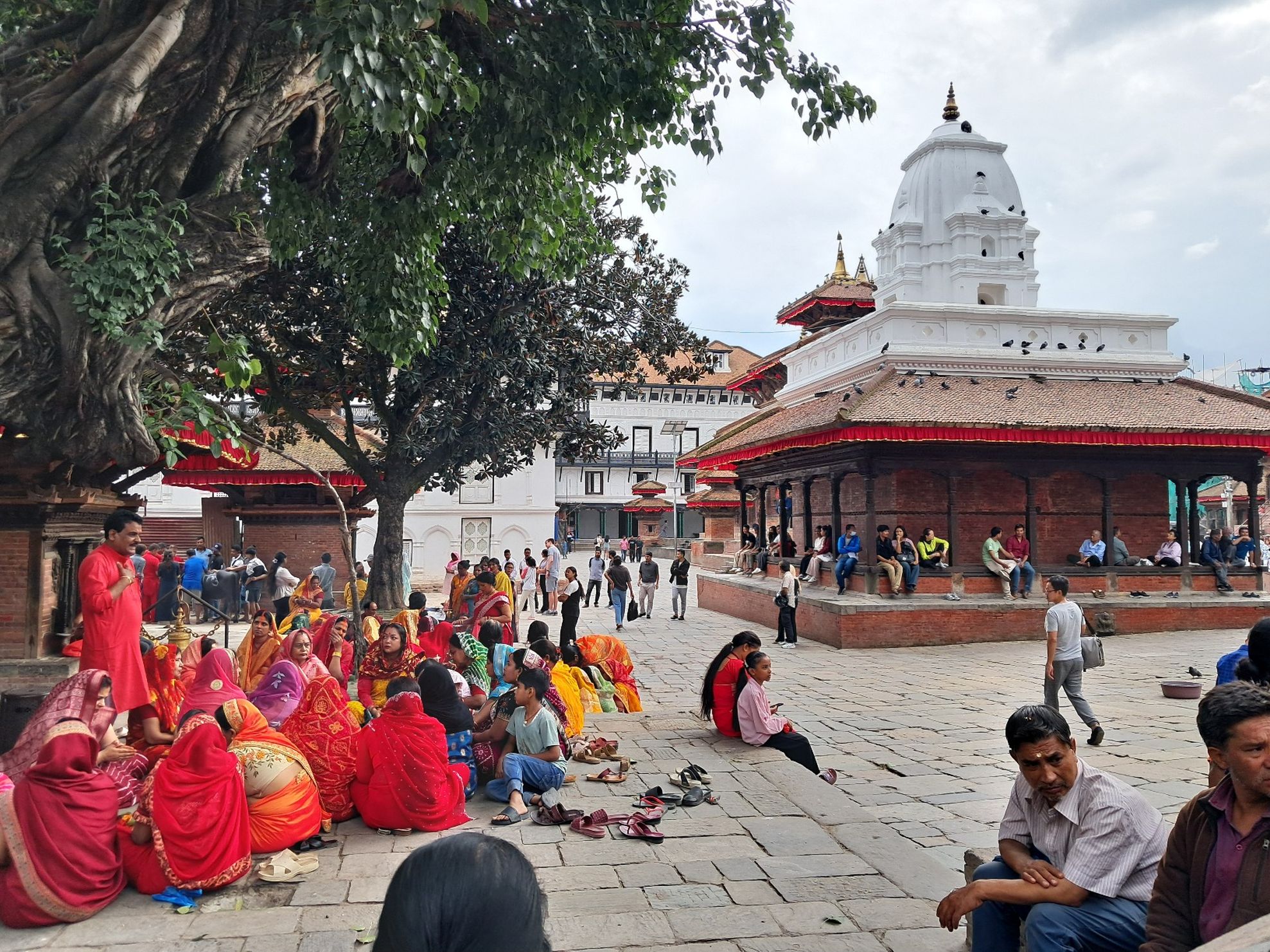 Colour of Durbar Square. Photo / Mike Yardley
Colour of Durbar Square. Photo / Mike Yardley
The Taleju Temple is the tallest of all structures, built by King Mahendra Malla in 1549 AD. Built in the 16th century, the Jagannath Temple is another head-turner, acclaimed for the fascinating erotic figures carved on the wooden struts. The 17th century Kumari Temple, or the temple of Living Goddess is a stirring example of the intricacy of Nepali craftsmanship. This is the official residence of the Living Goddess Kumari of Kathmandu, revered by Buddhist and Hindus, alike. The latest goddess is a two-year-old, who was chosen at the start of October and will live in the house until puberty. She is considered as the living incarnation of the goddess Taleju. Visitors can get a peek of her and seek blessings during special hours.
From New Zealand, it’s just a one-stop connection to Kathmandu with Singapore Airlines, on their daily services from Auckland and Christchurch, with well-timed connections from Changi Airport on to Kathmandu. Across all classes of travel, the award-winning carrier has not only fostered a world-beating reputation for its exceptional customer service and in-flight product, but also its innovation. Become a KrisFlyer member and enjoy complimentary in-flight WiFi. For best fares and seats to suit head to singaporeair.com
Mike Yardley is our resident traveller on Jack Tame Saturday Mornings.
Take your Radio, Podcasts and Music with you









